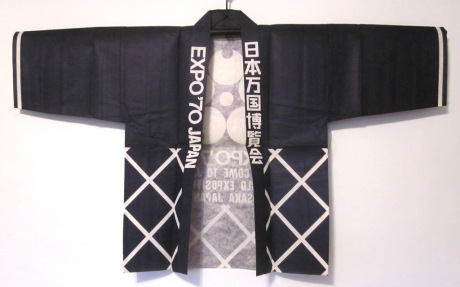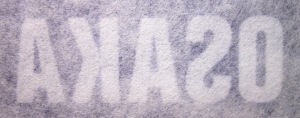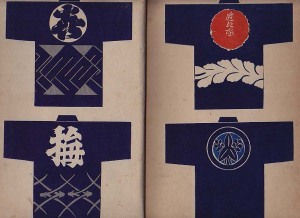Happi
Polyester felt (?)
The happi, which identifies members of the same group, has a very long tradition, which has here been updated for modern times. The color, the large central crest, and design at the hem echo the standard happi, but for the 1970 Expo, old fashioned cotton has been replaced with new fashioned synthetic fibers.
This happi looks as though it was never worn (perhaps because it says well come). The stiffness, sheen, texture and atypical reaction to bending and creasing may have been attractive novelty features in 1970. In the close-up below, the fibers have no warps and wefts, but appear randomly placed, as if they were felted. Felting works through friction, shrinkage and the interlocking of fiber scales. Since this material is synthetic, the ‘felting’ process is more likely the result of heat and pressure.
The individual fibers are harder to make out on the reverse, which received no dye at all. (Double click to enlarge.)
Here is a view of the edge of the material.
Just as kimono were ordered from design books, so were happi. This book is dated 1950, only twenty years before Expo was held.






I wonder if this could have been made by a spun-web process, like Pellon interfacing?
brings back memories as I spent a week at Expo 70 in Osaka that summer… it was wonderful and I was 12!